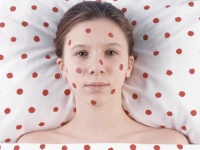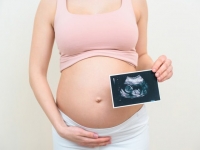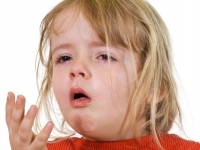Rubella: for whom a childhood illness can be dangerous?
 Rubella is a viral infectious disease that occurs quite easily in childhood, but harder in adulthood. Rubella is especially dangerous during pregnancy, because it causes severe malformations in the fetus and may even lead to its death.
Rubella is a viral infectious disease that occurs quite easily in childhood, but harder in adulthood. Rubella is especially dangerous during pregnancy, because it causes severe malformations in the fetus and may even lead to its death.
What you need to know about rubella?
Rubella is a very contagious disease that is transmitted by airborne droplets. You can also become infected through household items, but worst of all, this virus is transmitted from a pregnant woman to the fetus. The patient is contagious about a week before the appearance of the first rash and this is another week after the onset of the rash. If a person does not have specific immunity to rubella developed by an illness or vaccines, the probability of getting sick after contact with a rubella patient is 90% or even higher.
From the moment of infection to the first symptoms of rubella, it takes from 11 to 24 days. A rash is one of the first signs of this disease, these are small red spots of an oval or round shape. Rashes have a falling character, that is, they appear first on the head, neck, face, and then spread to the torso, arms and legs. It is characteristic that there is no rash on the palms and soles of the feet. Sometimes a rash appears on the oral mucosa. Usually in 5-7 days the rash starts to pass.
In adults, the disease is much more complicated than in children, the rash merging with each other.
So the rubella symptoms include:
characteristic rash;
increase in body temperature before the rash and during the spread of the rash;
swollen lymph nodes in different areas (in the neck, in the armpits, in the groin);
loss of appetite, nausea due to intoxication;
headache, which does not pass for a long time, painkillers do not help;
runny nose, sore throat, cough;
pain in the joints and muscles;
conjunctivitis, photophobia, lacrimation.
Rubella and pregnancy
As already mentioned, it is most dangerous to get rubella during pregnancy, and not for a woman, but for a fetus. The rubella virus can cause very serious malformations in a baby or even lead to his death.
There is also the concept of congenital rubella: which is transmitted from mother to fetus. Because of it there are damage to the nervous system, heart defects, damage to hearing, eyes.
Rubella treatment
There is no specific treatment for rubella. The patient should be isolated as much as possible from society and other family members, watered a lot, and, if necessary, bring down the temperature. Treatment is purely symptomatic, to improve the general condition of the patient.
Sometimes rubella leads to complications. It is about the accession of a bacterial infection, damage to the joints, the nervous system. If rubella occurs in severe form, it requires treatment in a hospital with constant monitoring of the patient’s condition.
Rubella vaccination
The spread of rubella can be controlled by universal vaccination. In Ukraine, it is recommended to vaccinate against this disease twice: at 12 months and at 6 years. Immunization helps protect the entire population, not just children. Indeed, in adulthood, rubella is much more difficult to bear, and for a pregnant woman and her future baby this is generally a disaster. Therefore, children vaccinated against rubella are a guarantee that they will not be responsible for the tragedy in someone’s specific family and will not infect a pregnant woman with this disease.



